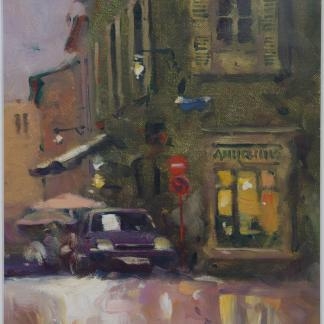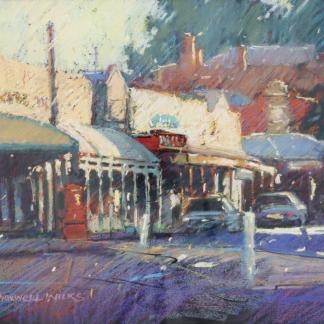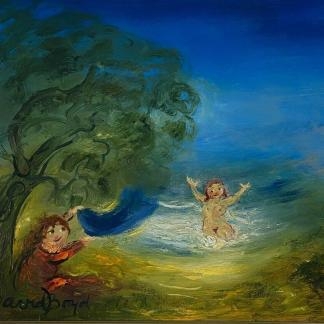Bio
Itzchark Tarkay (1935-2012) Bio
Itzchak Tarkay was born in 1935 in Subotica on the Yugoslav Hungarian border he developed an interest in art after the war and in 1949 he and his family immigrated to Israel Itzchak received a scholarship to the Bezalel Academy of Art and Design in Jerusalem where he was allowed to study under the artist Schwartzman Itzchak also later enrolled in the prestigious Avni Institute of Art and Design and worked under important Israeli artists of the time such as Moshe Mokady, Marcel Janko, Yehezkel Streichman, and Avigdor Stematsky and he graduated in 1956 Almost immediately, Itzchak established a reputation as brilliant figurative artist He produced timeless work that highlighted the best parts of modern art history The inspiration for his work lies with French Impressionism and Post-Impressionism He held artists such as Henri de Toulouse-Lautrec, Paul Cézanne, Camille Pissarro, Pierre-Auguste Renoir, and Henri Matisse in high regard As a result, one can see the color sophistication of Matisse and drawing style of Toulouse-Lautrec Itzchak body of work in particular much in the style of the legendary Pablo Picasso, his art is politically relevant without being a political platform He touches on issues that affected his life, including racism, religious freedom, the Holocaust, and Middle Eastern violence He most often paints women these works focused on the female figure by using simplicity of form and line, along with a rich palette not unlike Toulouse-Lautrec, to create sensitive portraits of elusive ladies Itzchak paintings have a haunting stillness about them Itzchak believed in beauty, and let aesthetics and human psychology drive his art As a result, the artist created visual poetry from the aura of his city cafés and intimate settings. He enjoyed the juxtaposition of surface planes, patterns, and materials Instead of focusing on minute details, his expressive paintings allow the color, plane and line to become emotional and establish mood.
Later Despite his initial success Itzchak withdrew from painting He rarely picked up a brush for the next 15 years waiting for what he called “the opportune moment to begin again.” After receiving acclaim for a one-man exhibition in Tel Aviv in 1975, he decided to take up painting again In 1977 Itzchak sought out mentorship from fellow Israeli artist Moshe Rosenthalis He painted with Rosenthalis for three years, and his distinct style evolved during this time Itzchak received worldwide recognition during the International Artexpo of New York in 1986 Here, the artist met Park West Gallery Founder and CEO Albert Scaglione Their fateful encounter eventually led to an exclusive partnership between Itzchak and Park West Following the artist’s death, Park West Gallery acts as his official estate Itzchak often expressed how much he enjoyed meeting his collectors and working with other artists In the later years, he shared his gift by mentoring younger Israeli artists, including David Najar, Yuval Wolfson, and Mark Kanovich. They often visited Itzchak studio, working alongside him and benefitting from his critiques
Art historian and critic Joseph Jacobs said the following about Itzchak:
“In a world so preoccupied with being politically correct, with dealing with social issues, with making art that is anything but painting, Tarkay holds onto timeless, universal values–to values that have staying power and do not simply ride the tide of fashion In contrast to the work of so many of his contemporaries, it will be impossible to look back on his work in the twenty-first century and describe it as dated.”
Itzchak: Accomplishments
He held his first exhibition in 1961 at the Dugit Gallery in Tel Aviv
His art has been featured in more than 50 exhibitions around the world including Israel, Hong Kong, Spain, France, Germany, the United States, and Japan
After exhibiting both in Israel and abroad, Itzchak received recognition at the International Artexpo in New York in 1986 and 1987 for works in a variety of media, including oil, acrylic, and watercolor.
He has been the subject of multiple publications. These include: “TARKAY: Intimate Moments, an Exhibition at Park West Gallery” (1991), “Itzchak Tarkay: The Park West Paintings” (1994), “Tarkay Profile of an Artist” (1997), and “Tel Aviv Retrospective” (2012).












